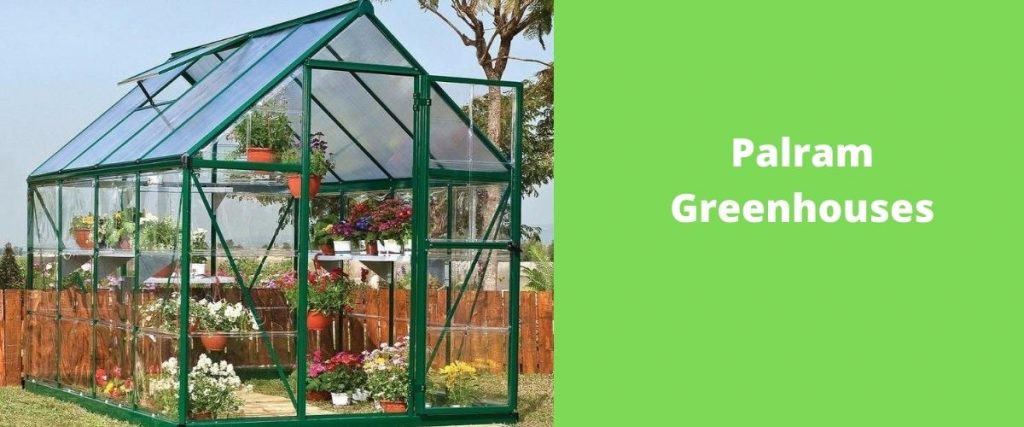The greenhouse atmosphere will aid in the protection of your crops from the elements, pests, and disease.
You can reduce the likelihood of pests and insects wreaking havoc on your plants. A greenhouse’s aim is to protect crops from extreme cold or heat, as well as undesirable pests.
A greenhouse allows you to grow specific products all year, and the most frequent crops grown in a greenhouse include fruits, tobacco plants, vegetables, and flowers.
High-value crops, such as medicinal plants and flowers can be grown in a controlled atmosphere in a greenhouse. Crops produced in a greenhouse are more nutritious and produce superior outcomes.
The architecture of a greenhouse is determined by the location’s latitude and the crop’s requirements. It might be costly to heat at times. Constant monitoring, maintenance, and care are required. It’s possible that your energy and water costs may go up.
The future of greenhouse crops is very bright. A greenhouse farmer of any size may profit from the rising demand for fresh, locally produced herbs and vegetables.
If you, do it correctly, your enthusiasm for gardening may help you create additional cash everywhere, from the city to the suburbs to the countryside. Selecting what you want to develop is one of the most crucial tasks.
Some experts advise sticking to a single crop on which you can focus your efforts rather than a variety of plants with varying water, fertilizer, and shade requirements.
Then you should try to estimate the volume of what you have the room and time to expand practically. After that, calculate your profit margin by estimating plant production costs in proportion to market pricing.
7 Crops to Grow in a Greenhouse
1. Bambo
Bamboo is another crop that may be quite profitable for greenhouse gardeners. One of the best aspects of Bamboo is how quickly it matures. Bamboos, in fact, may grow as much as 2 feet in a 24-hour period, which is incredible. Another advantage of Bamboo is that it can grow in virtually any environment and is extremely resistant to cold. Bamboo is a big trend that is mostly utilized in landscaping and interior design. Bamboo is also one of the most lucrative crops, with some merchants claiming to have sold potted Bamboo for as much as $200 each.
2. Herbs
Fresh herbs are constantly in demand, and producers may substantially profit from including a few herbs in their crop. Herbs require little maintenance and take up less area, allowing you to grow more plants per square foot. Basil, chives, cilantro, and oregano are just a few examples of herbs that can be grown for profit. Farmers’ markets are a fantastic way to start selling your herbs directly to the public if you don’t know where else to sell.
3. Tomatoes
Tomatoes are one of the most popular greenhouse crops for a reason. To begin with, tomatoes are constantly in demand, and some kinds, such as San Marzano tomatoes, may appeal to specific businesses. Tomatoes are also a very adaptable crop that may be produced in the same circumstances as a variety of other crops. Chilies and bell peppers grow in the same circumstances as tomatoes, so you may use them to vary your harvest. If you want to maximize earnings, use high-yielding types like Heirlooms that mature early.
4. Ginseng
This plant has been used as a medicinal herb and tonic for hundreds of years, and it brings in so much money for producers. Ginseng has long been a part of Asian culture, but it is increasingly gaining appeal in Western countries.
Ginseng is such a valuable crop that it is often referred to as “green gold” by producers. If you had a large unoccupied lot and patience, you might make a lot of money cultivating ginseng.
We suggest patience since ginseng can take up to 6 years to mature, and you can’t harvest roots before they’re fully mature. The only way to sell it before it matures is to sell immature “rootlets” to other customers to increase your profit margin.
5. Mushroom
Mushrooms are fungus that may be cultivated as food in greenhouses, just like many other plants. Mushrooms, unlike other plants, do not require sunshine to thrive. Mushrooms, in fact, thrive in chilly, dark environments.
You might be able to grow mushrooms yourself if you have a place like this in your greenhouse or if you can make a few adjustments to create one. Though a small amount of light will not hurt your mushrooms, it is preferable to grow them in complete darkness.
To grow mushrooms in a greenhouse, you may need to make some light-blocking adjustments to one of the greenhouse’s sections. You may also need to make an effort to keep the temperature between 55 and 60 degrees Fahrenheit consistent.
Maintain a moist atmosphere in the greenhouse and avoid strong draughts, which can injure growing mushrooms.
6. Leafy Green
Tomatoes, peppers, strawberries, lettuce and other greens, beans and peas, and cucumbers are the finest vegetables to produce in a greenhouse since they can be eaten or sold and flourish indoors. In the winter, use cold-tolerant plants like greens, and in the summer, use heat-tolerant plants like peppers.
The most popular locally cultivated crops are leafy greens, including lettuce, arugula, kale, mustard, and spinach. They may be grown year-round in hydroponic greenhouses in a regulated setting.
7. Strawberries
The flavors of grocery-store strawberries and cultivated strawberries are vastly different. As a result, strawberries are one of the most popular garden fruits in the United States. Strawberries can be grown in a greenhouse.
However, you’ll want to pay close attention to the plants you choose and make sure you’re familiar with the ins and outs before getting started. These berries might be another profitable alternative for producing in a greenhouse. Strawberry plants are generally affordable during the growing season.


